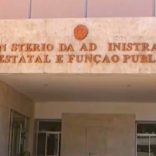Zimbabwe, Mozambique launch two major agricultural and conservation projects
Mozambique: CTA pushes for tax incentives in agriculture, same as in extractive sector

File photo: Macauhub
The president of Mozambique’s Confederation of Economic Associations (CTA), the country’s largest employers’ association, yesterday called for the government to put in place for agriculture the same tax incentives that obtain for the extractive industry.
“If the government has put in place tax incentives to attract investment in the extractive industry, oil and gas, we think it is consistent, even constitutional, to do so for agriculture, as the basis for national development. For us, this is a matter of political will,” CTA president Agostinho Vuma said at a session to review the year of 2019 and preview next year.
“We will continue to advocate reducing the IRPC [corporate income tax] on agriculture to 10%. This is a very big incentive for an industry that still needs concrete incentives to grow,” he added.
Looking forward to next year, Agostinho Vuma had more proposals to the executive taking office in January, after the Mozambican Liberation Front (Frelimo) consolidated its position in the October 15 general elections.
“In manufacturing, we have identified and discussed with the government ways to minimise constraints to development”, by “adopting a seasonal tariff for manufacturing” and “reducing VAT and customs duties on imports of raw materials.”
“We note that the VAT exemption on the importation of raw materials for the production of sugar, vegetable oils, soaps,” among others articles, “will expire on 31 December”, leading CTA to advocate “for its renewal, given its importance for the maintenance of this industry, as well as for the social fabric.”
The president of the CTA reiterated his concern about the level of interest rates, arguing that they remain “prohibitive for small and medium business, even when the central bank’s reference rate indicates otherwise.”
The prime rate for the Mozambican financial system is 18%. Since it was created in May 2017, it has fallen by 9.75 percentage points, and has never risen.
“Analysing the process of interest rate formation, it was found that one of the factors influencing the current level is the high credit risk,” Agostinho Vuma noted, going on to advocate the “effective implementation of the extended credit information system, providing appropriate risk ratings and thereby reducing information asymmetry.”













Leave a Reply
Be the First to Comment!
You must be logged in to post a comment.
You must be logged in to post a comment.